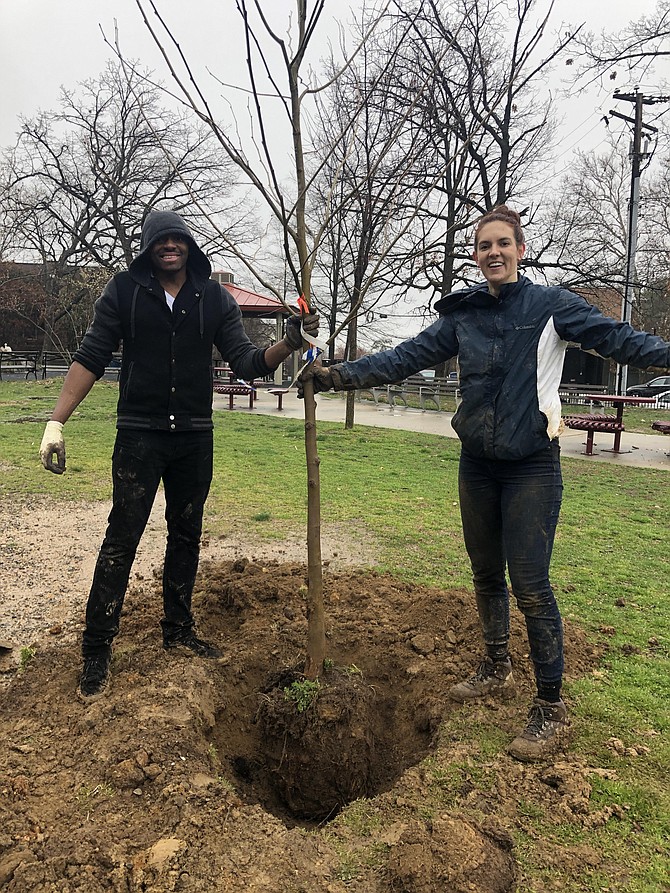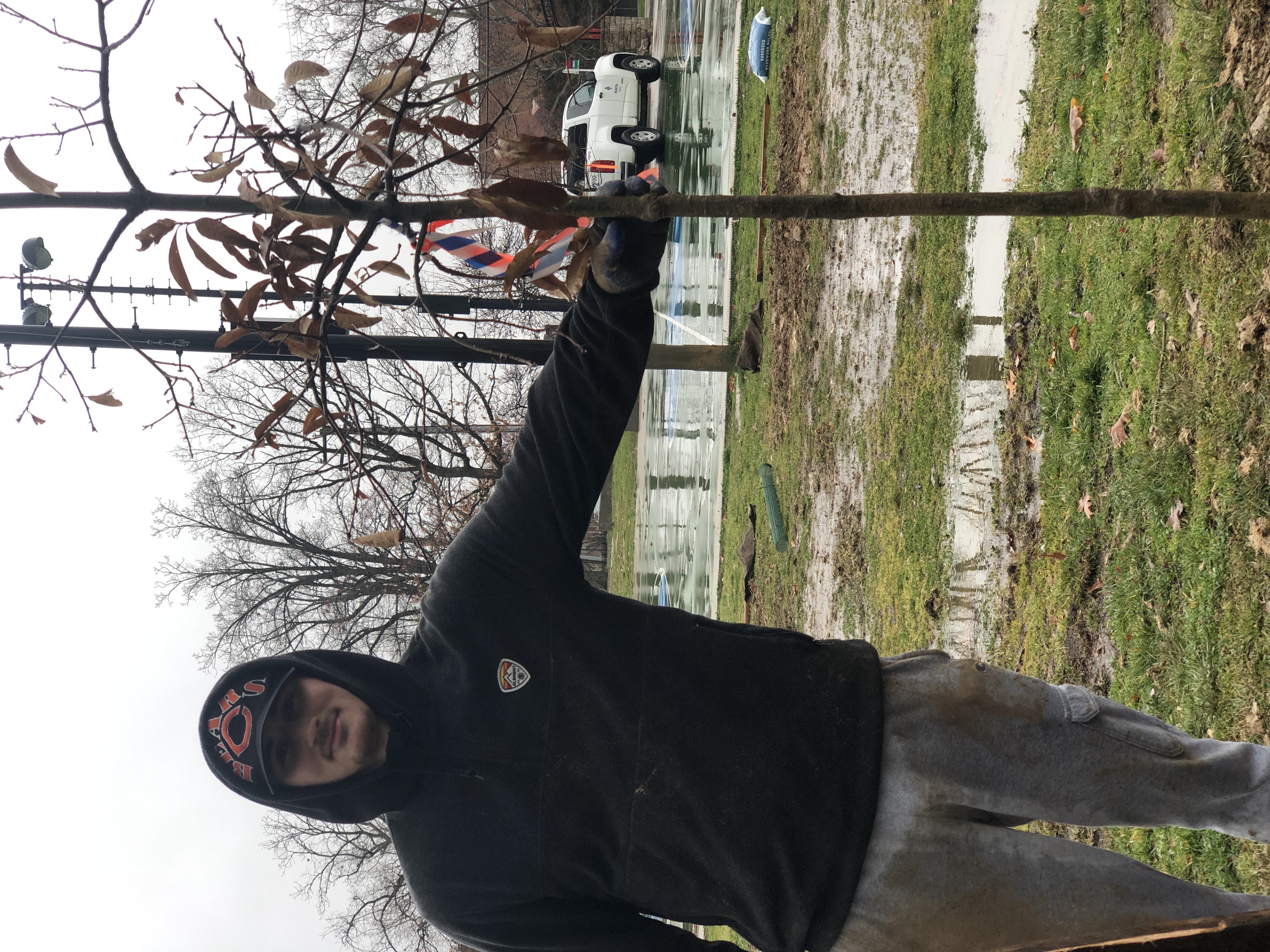Meghan Mitchell (right) and Nazaire Kunlipe, stand next to the tree they just wrestled from its root wrap and rolled into the hole they dug despite the wet, compacted, stoney Virginia clay. The native Sycamore will offer shade to generations to come. Mitchell is a graduate assistant for the Saints Service Network, part of the Office of Volunteer Opportunity, getting her degree in school counseling.
A dozen brave Marymount students got up way too early on a Saturday morning to go dig holes in the pouring rain, joined by a bevy of Tree Stewards who lent their expertise — and muscle — to the three hour project. A park in South Arlington will be shadier and offer branches to climb on in about twenty years because of this effort to plant 25 canopy trees. The soil will improve, the drainage will be more effective, and carbon will be sequestered. Birds will have a place to hang out and bugs to eat.
Susan Agolini, a professor of cell biology at Marymount explained the genesis of this impressive community service project. It all started with a member of the VIrginia Foundation of Independent Colleges (VFIC) visiting the Richmond Science Museum a couple of years ago and talking to Jeremy Hoffman, the David and Jane Cohn Scientist at the Science Museum of Virginia. He talked about the Heat Watch program being done by CAPA Strategies, a company in Oregon that helps communities map out the hottest parts of their cities and towns in order to tackle climate change.
Each of the participating colleges decided they would map their own localities.
Although Susan Agolini is a cell biologist, she was on a committee at Marymount that was hoping to begin a research project to see if members of VIFC could work together. They put together a team including the localities of ten of the 16 colleges in the VFIC: Richmond, Arlington, Abingdon, Farmville, Lynchburg, Virginia Beach, Winchester, Salem, Petersburg and Harrisonburg.
CAPA Strategies met with each location and they came up with several driving routes in Arlington covering the whole county. Each route was driven three times a day. It took an hour for each driver and navigator to cover the route, using a special monitor CAPA had given them, going in the early morning, noon, and night. The monitor took heat and humidity readings every second. To get this done, Marymount had help from Eco-Action Arlington which came out in force to do it with students. They tried to pick the hottest day of the year, which was tricky for planning purposes, but they finally landed at the end of July. It took a village, as schools were out and volunteers who had committed earlier weren’t in D.C. in July, but eventually, with even Agolini’s 24-year=old daughter joining the effort to help drive routes, and with the help of partners like the National Oceanographic and Atmospheric Agency, and National Integrated Heat Health Information Systems who also collaborated with the group, they got enough data.
Marymount sent the monitoring devices back to CAPA and they generated the heat maps. VFIC then applied for a grant to see their project to completion. Each location was given up to $15,000 to plant trees.
At that point, the Arlington/Marymount group got in touch with Vincent Verweij, County Forester, to decide where within the hottest areas of Arlington they would plant trees. “We wanted to plant them on public land,” said Agolini, who coordinated the whole effort here, “because the trees will be taken care of by the County and will benefit more people as they come to the park.”
“Of course, the Pentagon parking lot was really hot,” said Agolini, “and so was National Airport, but we can’t plant trees on the airport.”
Verweij picked the Tyrol Hills Park, 5101 7th Rd South.
“One of the things that I thought was cool and sad at the same time - historically the hotter areas are in areas of lower income, typically underrepresented or underserved areas, and since there are already discrepancies in healthcare in those areas, and the heat effect just exacerbates that, the planting of trees is particularly important there,” said Agolini.
Marymount University has a strong emphasis on service to the community; the number of hours required varies by program, but all students will engage in some public service. “We set up the Saint Service Network in the Office of Volunteer Opportunities to empower students engaging in service,” said Agolini.
They also do a “Plot Against Hunger” on the campus and help garden at St. Andrews Church.
The trees, purchased from Casey Trees, didn’t cost the whole $15,000, so Marymount will be looking to plant more trees or return the funds, if they can’t be used by the end of the year.
For more information: see https://www.capastrategies.com, and https://www.vfic.org, and to help out next time, see https://treestewards.org or www.ecoactionarlington.org


